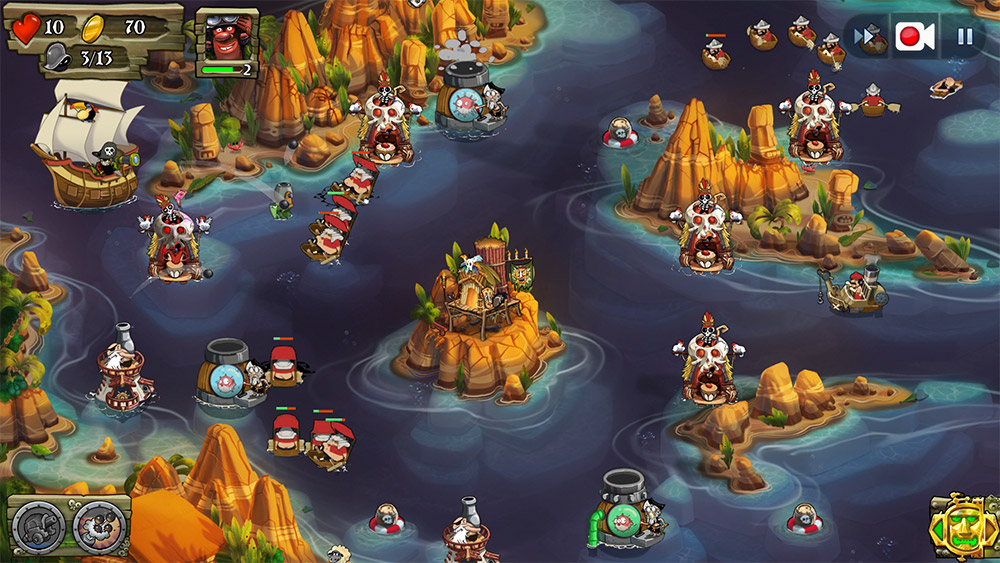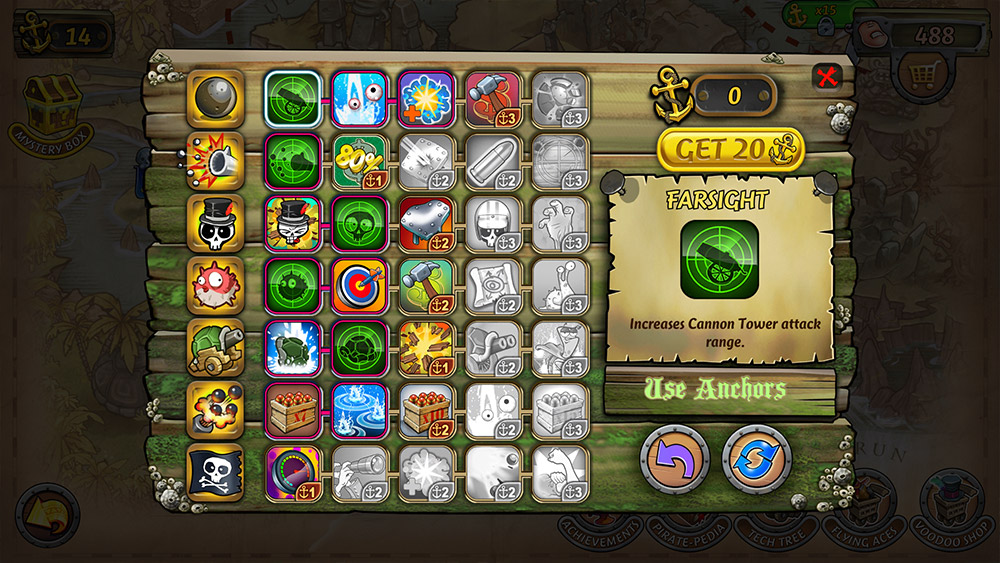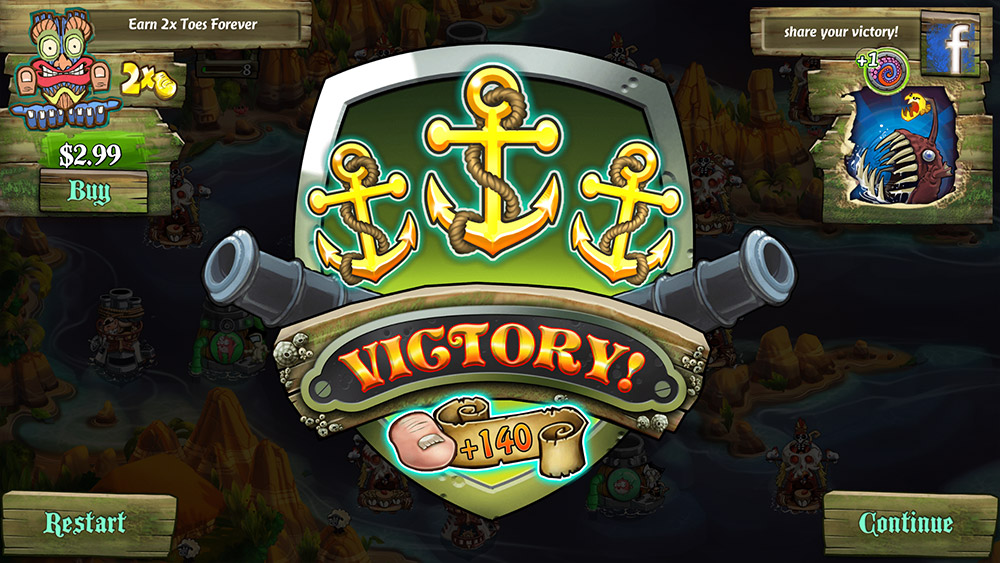Tower defense (TD) is a subgenre of strategy video game where the goal is to defend a player’s territories or possessions by obstructing the enemy attackers, usually achieved by placing defensive structures on or along their path of attack. – Wikipedia
I wanted to put my mind on auto-pilot for a few hours this weekend, so I downloaded a tower defense game on my iPhone. It’s called Pirate Legends and it reminds me very much of the Kingdom Rush tower defense series that I used to play quite a bit a few years ago. The graphics are cartoonish and the screen quickly fills up with dozens of enemy attackers swimming or sailing through the channels of water trying to attack my ship. It took me a few tries before my eyes and mind calibrated to the dizzying movements of the screen and I started to get in the groove of launching turtle-shell cannons and positioning the ship to blast multiple cannonballs at incoming enemy waves.

As I progressed through the different levels, it struck me that the core of TD strategy was not too different than running a business, namely the important task of putting the right people in the right seats (see “The People Component” chapter in Gino Wickman’s Traction for a good explanation of this concept). In a TD game, there are limited spots where you can place different types of “towers”. In the case of Pirate Legends, there are four types of towers: a cannon-based tower, a gun/spear-based tower, a magic tower, and a toxic-sludge tower that slows enemies down. As you play, you can pay to upgrade (think “promote”) these towers to ones that have greater powers and capabilities. The key to winning a level in a TD game is to have the right combination of towers that can most efficiently kill off the enemy.
How do you know how to have the right combination of towers? You have to have a good understanding of the enemy. While it’s an unfortunate word choice for the analogy I’m making, the “enemy” is the customer and the problems/challenges the customer brings to the business. In a TD game, there are many types of enemies. Some can fly, some can disappear underwater, some are immune to magic, and some can even disable your towers momentarily. Understanding the enemy’s characteristics will help inform the decisions you make in the types of towers you build. As I played Pirate Legends, I typically played each level the first time as a scout to see the composition of each enemy wave. Once I understood which enemy types would come in which order, I could devise a winning strategy and reconfigure my towers for a better chance to win.

In between levels, you can choose which skills you want to increase.
The analogy extends beyond in-level gameplay. After you complete each level, you are awarded certain amounts of gold (or in the case of Pirate Legends, some golden anchors and toes) to build up your skillset or to add weapons to your arsenal. There are parallels to this in business: do you reinvest your profits in expanding operations, in providing additional training for employees, in enhancing marketing and sales, or taking it out of the business? In a TD game, the choices are much simpler and straightforward than in business, but the types of skills you invest in and the timing of that investment could impact your performance with new enemies in the next level.
The last aspect of TD that I’ll compare to business is the second-to-second management of the towers and their development path. When you start a new level, you have a limited amount of gold to build your towers. This means that a big chunk of the building will happen as enemies continue to come in waves. There are moments when the waves start to overwhelm the towers and get increasingly close to breaching your tower (and subsequently taking your lives). The key is to keep your cool and methodically build and upgrade the right towers at the right time while also deploying one-off attacks that supplement the towers. In the case of Pirate Legends, this includes a “hero” character who flies his plane and shoots at the enemy as well as a turtle shell that can shoot cannons for a few seconds before disappearing. When it comes to business, this is not too different from the manager doing his or her best to hire and promote the right people and also jumping into the action to help troubleshoot when necessary. Most of the time, it’ll be hectic with customers (or orders/projects/assignments/tasks) continuing to come in waves. The key is to keep your cool, trust your process, and continue to grind it out. In TD, when that final wave comes and you’re able to destroy everything with your fully upgraded towers, it’s a very satisfying feeling. Likewise, when you’ve built up a competent and well-trained team that can handle the toughest of customer demands, it’s a winning feeling.

Winning in business feels many times better than winning a level in a TD game, but TD is fairly easy and a lot less stressful.
To summarize, business lessons found in TD are:
- Put the right people in the right seats (which means understanding the strengths and weaknesses as well as the right combination of people)
- Understand your customers and their problems (the many types and nuances, and which of your people will be best equipped to handle them)
- Be thoughtful in the way you reinvest in the business
- Keep your cool, trust the process, and grind it out (the day-to-day requires rigor and discipline)
Of course, TD is just a video game. Business, as much as I love to bring analogies into talking about it, is not a game. It’s a serious activity that involves people’s lives, real money, and lots of time. It’s also not something you can totally figure out and master like a video game. No matter how good you may be at it today, there’s always a chance that something unexpected will trip you up tomorrow.
